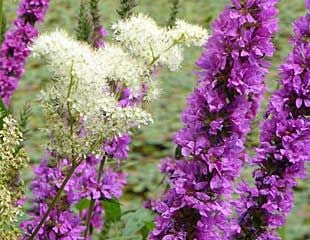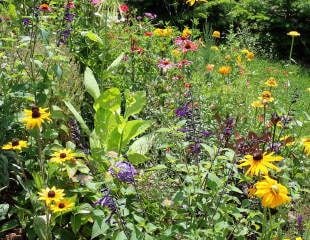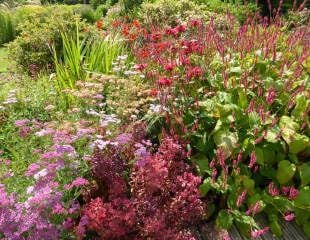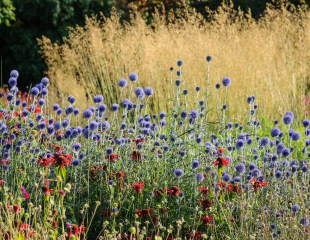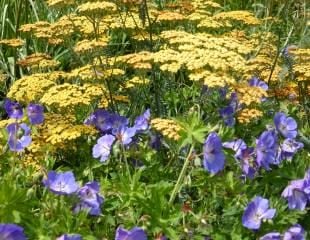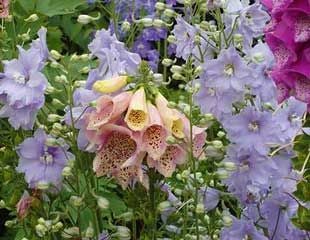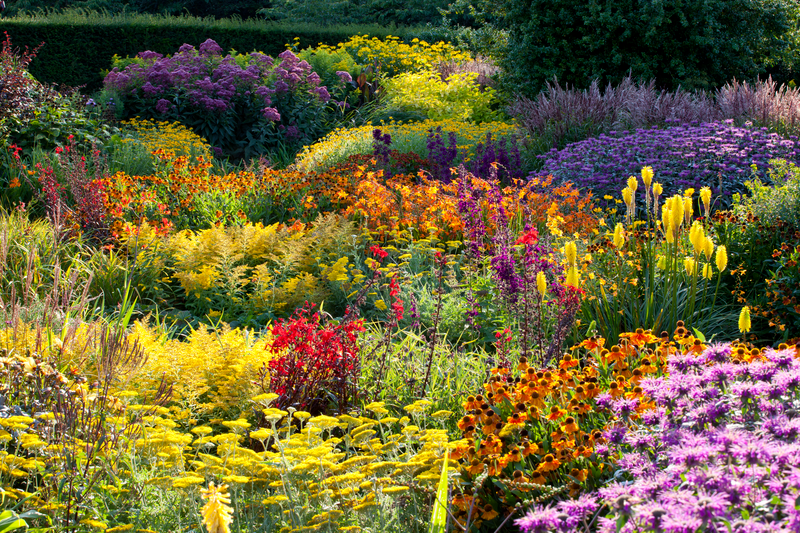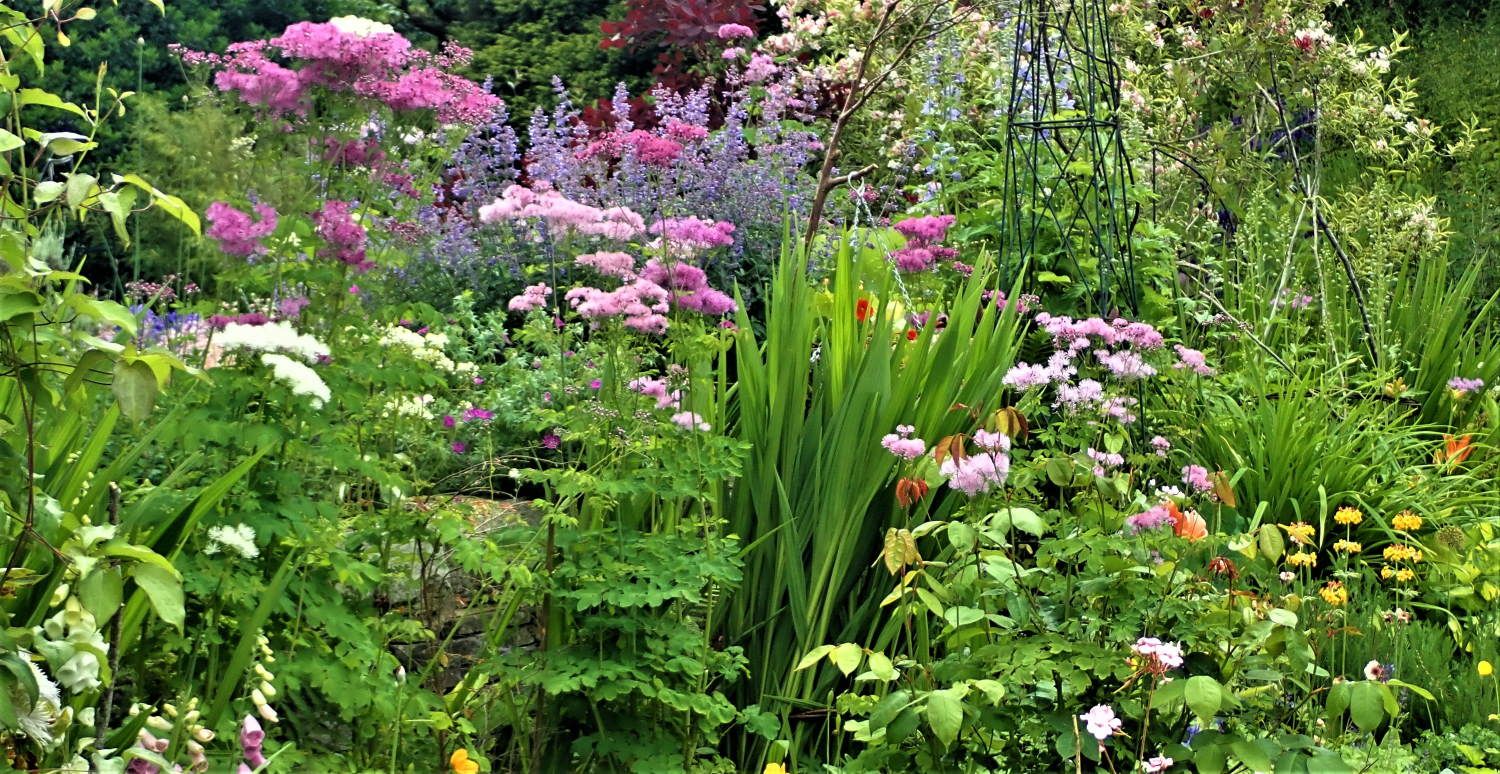
What is an herbaceous border ?
A herbaceous border is a style of planting which relies exclusively, or heavily on herbaceous planting.
Gardeners often use the phase "Herbaceous" so what does it mean?
Herbaceous plants die back in the autumn, and winter to bare earth and then re grow each spring. If you had nothing but herbaceous plants in your border in the winter, it would be completely bare.. Above is a section of herbaceous planting from my garden, in which there are thalictrum, delphiniums, crocosmia, nepeta, geum, primula and only the roses remain in the winter.
Below is a section of the stunning hot border at RHS Rosemoor which combines Dahlia, Helenium, Kniphofia, Asters and Lobelias.
Other plants commonly included in herbaceous planting are Astilbe, Veronica, Rudbeckia, Gaura, Salvia, and Echinacea. We can see excellent examples of herbaceous planting at the RHS gardens, also Arley Hall, which has a double sided, 90 metre long border. Also renown for herbaceous planting is the Hillier garden, in Hampshire which has lovely sweeping borders. Country living has some ideas of gardens to visit displaying herbaceous plants.
Herbaceous borders are less popular as gardening tastes change. Herbaceous planting increased in popularity as the range of plants available to gardeners increased. Broadly, this was the Victorian age of plant exploration and plant breeding, new varieties became available to display in gardens .
Popularity peaked and suffered a decline around World war 1 because of the level of maintenance required to keep a herbaceous border looking good. They were primarily a feature of large houses and gardens, when garden maintenance fell on an army of gardeners, which became difficult during the first war and thereafter with social change. Some herbaceous plants had to be lifted to be overwintered. There was lots pruning and a massive task of staking all the plants to keep them upright.
More recently, we have unpredicable weather with drought becoming a feature in many parts of the country, not just the traditionally dry areas. Many of the plants added into a herbaceous border, such as delphiniums, hosta, Helenium need moist soil.
So is the herbaceous border condemned to garden history? We may not aspire to a long herbaceous border, but it's worth looking at herbaceous planting to incorporate sections into a border, combined with shrubs and climbers. Herbaceous plants are the fireworks, full of colour and style. By mixing and matching with shrubs and climbers, you can create the perfect border with colour and structure.
What to consider if you are thinking of creating a Herbaceous border.
- Can you live with bare earth over winter?
- To create the ideal herbaceous border, careful planting is needed to graduate the height from the back of the border down to the front. Some moving around, readjusting maybe required.
- Many, if not most, herbaceous plants need staking to keep them in the right place and so they do not overlay the neighbouring plants.
- With our varying climate, some herbaceous plants will need watering.
- At the end of the season there is a big clean up and cutting back which is labour intensive.
So is the herbaceous border condemned to garden history? We may not aspire to a long herbaceous border, but it's worth looking at herbaceous planting to incorporate sections into a border, combined with shrubs and climbers. Herbaceous plants are the fireworks, full of colour and style. By mixing and matching with shrubs and climbers, you can create the perfect border with colour and structure.
Here are some ideas:

